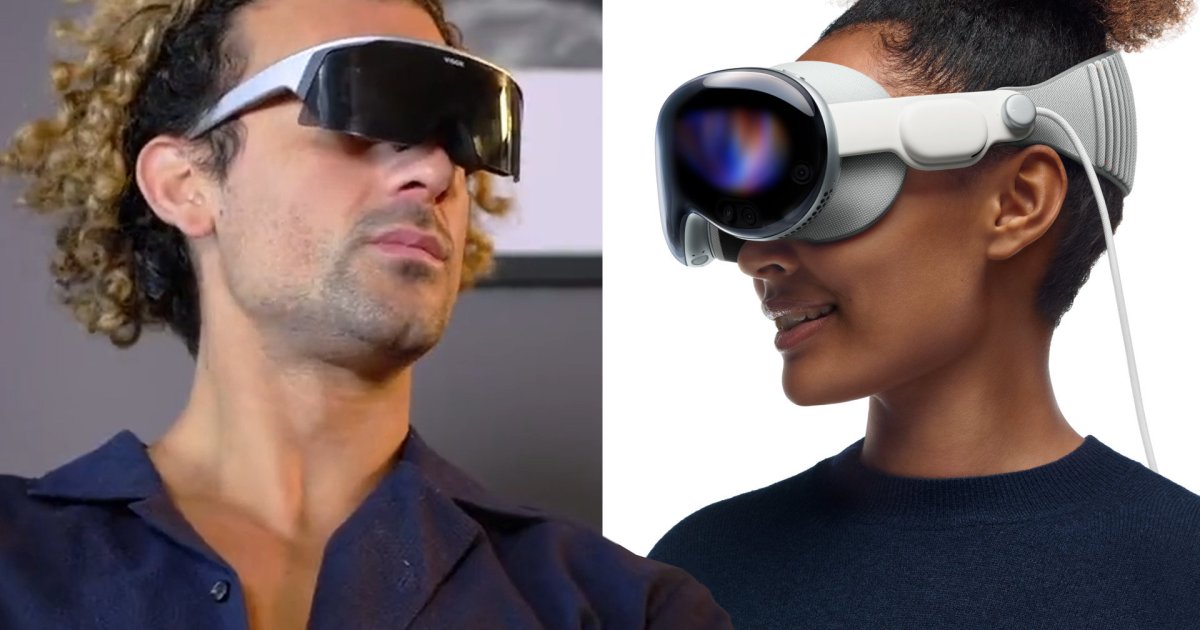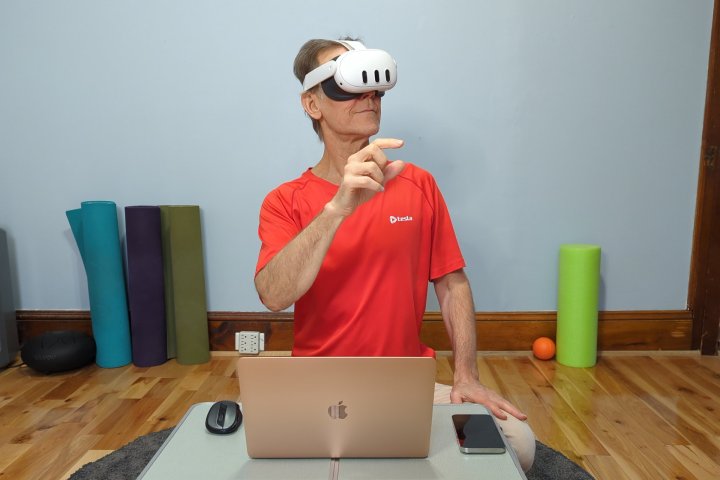
The Vision Pro is impressive, but it’s not for everyone. That’s why some people are already returning their orders just two weeks after the $3,500 product first launched. Fortunately, if that’s you, or if you like the concept of Apple’s Vision Pro, but aren’t convinced it’s a match for your needs, there are several alternatives to consider. Similar options start at $500 and climb to $3,900.
Some of the best VR headsets available now offer many of the same capabilities, but require a VR-ready Windows gaming PC. Others fall short of the Vision Pro’s specifications, but are still great choices at a much lower price. Either way, it’s a great time to review what Vision Pro alternatives you can buy right now and what’s coming in the near future.
Meta Quest Pro
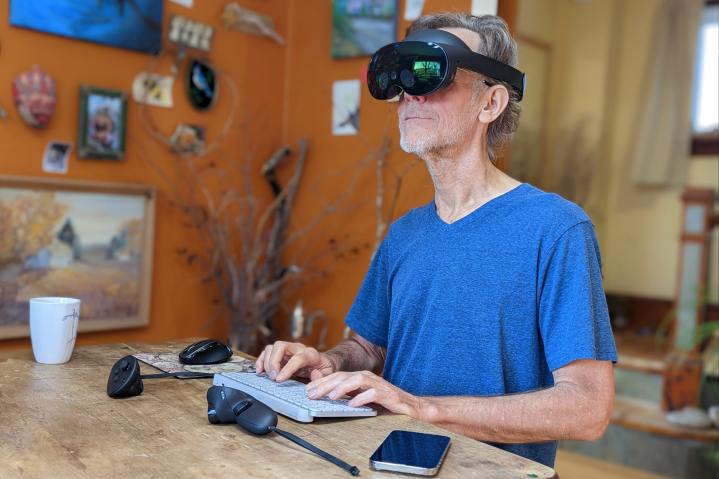
If you’re looking for the freedom to move around, being tethered to a computer is very limiting. Even with the portability of a laptop, you still have to worry about stepping on the HDMI cable that provides power and video to a PC VR headset.
That’s part of the reason standalone headsets from Meta are so popular. They’re relatively lightweight, easy to carry, don’t require a computer at all, and are usually much less expensive. Meta debuted the Quest Pro at $1,500, which was a shock after years of the budget-priced Quest and Quest 2 VR headsets. A few months later, Meta cut a third off the price. At $1,000, the Quest Pro is a bargain.
The Quest Pro’s resolution of 1800-by-1920 pixels is comparatively low and the mini-LED backlighting isn’t as good as some high-end headsets. Still, you get the equivalent of multiple 1080p displays when using the headset for spatial computing.
Meta has been refining VR headsets for many years and the Quest Pro’s hand-, eye-, and face-tracking rivals that of the Vision Pro. The mixed-reality quality is in color, but has noise and artifacts that detract from the experience.
Where it shines is the design. The Meta Quest Pro doesn’t rest a pound or more of weight on your cheeks, which is surprisingly rare for a VR headset. Instead, the headset hovers in front of your eyes, with the weight balanced between a rear battery and the headset in a halo strap that rests against your forehead and cups the back of your head.
Meta Quest 3

The $500 Meta Quest 3 might sound like a ridiculous suggestion for anyone looking for an alternative to Apple’s Vision Pro, but it’s not. This little headset is a beast, and in some ways, it’s the Vision Pro’s most direct competitor.
It’s a standalone VR headset with great hand-tracking and good mixed-reality quality. The Quest 3’s Qualcomm Snapdragon XR2 Gen 2 chip can’t compete with the Vision Pro’s M2, but it seems to have plenty of performance to offer great hand-tracking, gaming, and the ability to watch 3D movies and browse the web.
For more performance, standalone headsets like the Quest 3 can connect to a computer. In this case, the Quest 3 beats the Vision Pro. Meta Horizon Workrooms supports up to three virtual screens, while the Vision Pro has only one. The Quest 3 can connect to Windows and Mac computers, while the Vision Pro supports only the Mac.
The Vision Pro wins in display resolution and eye-tracking. The Quest 3 doesn’t have eye-tracking and has a display resolution of just 2064 x 2208 pixels per eye. On the other hand, the Quest 3 ticks all the boxes of a great VR headset and has a massive library of immersive games that the Vision Pro lacks.
Varjo X-4
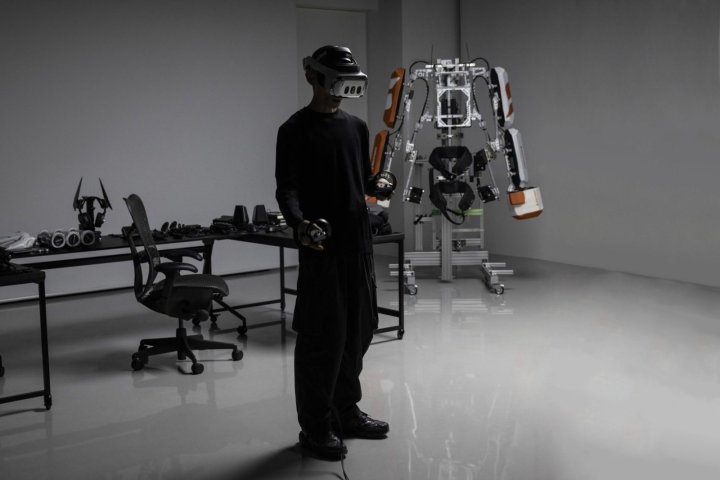
The potential to handle professional apps gives the Vision Pro an advantage over standalone VR headsets. However, high-end PC VR solutions can connect to powerful Windows PCs with discrete graphics cards, supplying enough CPU and GPU performance to outpace even the speedy Vision Pro.
Varjo makes VR headsets for enterprise solutions like 3D design, simulation, and training. In January 2023, I reviewed one of its least expensive headsets, the $2,000 Varjo Aero, and was awed by the crisp visuals and dynamic range.
The Aero has been discontinued, but in November 2023, Varjo announced its best VR headset yet, the X-4 series. Its 3840 x 3744-pixel screen resolution exceeds Apple’s ultra-sharp 3660×3200-pixel displays. Apple probably offers better dynamic range since it uses OLED technology, while Varjo relies on the less accurate mini-LED backlighting of LCD.
Starting at $3,990, we wouldn’t have included this VR headset in a consumer-oriented article, but Apple’s $3,500 Vision Pro is only a few hundred dollars less. The Varjo X-4 might also beat Apple in mixed reality fidelity as it features a lidar sensor and two 20MP cameras that, according to Varjo, provide real-time, photorealistic passthrough.
You’ll need an expensive Windows PC and advanced software to take advantage of the graphics power of such a demanding VR headset, adding to your bill. Varjo is targeting enterprise customers, but if you’re considering spending several thousand dollars on the Vision Pro, the Varjo X-4 might be within reach.
Pimax Crystal

Last summer, Pimax launched its best PC VR headset, the Crystal. While this headset has a standalone mode, the most impressive results come when you connect to a PC with a high-performance Nvidia GPU.
The Pimax Crystal trails Apple’s Vision Pro in terms of sharpness and dynamic range, but it’s among the best VR headsets available, boasting eye-tracking, foveated rendering, and 2880 x 2880-pixel displays with mini-LED backlighting.
It’s good enough to replace the Varjo Aero, and the Pimax Crystal easily eclipsed my Meta Quest 2 and Quest Pro headsets in display quality. At $1,599, Pimax’s best is inexpensive compared to the Vision Pro’s $3,500 price, but still expensive compared to standalone solutions.
Upcoming Vision Pro alternatives
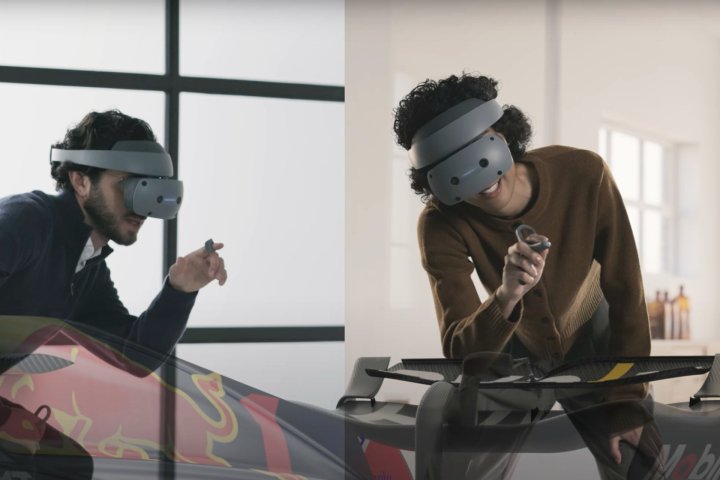
Other manufacturers haven’t been sitting still while Apple worked on the Vision Pro. While Apple’s headset was kept secret, everyone knew it was coming thanks to insider leaks and Apple’s patent filings.
Immersed Visor
A surprising competitor to the Apple Vision Pro comes from VR software developer Immersed. Its Visor headset will reportedly match the Vision Pro’s 4K resolution and look-and-pinch user interface while weighing about as much as a phone and costing about $1,120.
Immersed specializes in remote virtual desktops and offers a better solution for VR headsets than Meta as it supports up to five virtual screens and your phone, with complete freedom in adjusting their sizes and positions. The Immersed app is built into the Visor, but it’s available for many VR headsets and will be coming to the Vision Pro.
Immersed had some fun with a YouTube video comparing the Visor to the Apple Vision Pro.
The Immersed Visor will start shipping this summer. Preorders start at $400, but require a one-year subscription to Visor Plus, a productivity-focused upgrade to the included Immersed software. At the end of the year, you can stop the subscription and continue to use the core features of the device and software.
Sony, Samsung, and Meta
Sony and Samsung have already announced upcoming Vision Pro competitors. Sony has shared many details and it’s clear their XR headset is meant for enterprise work. Samsung has only teased work on an XR headset.
Meta hasn’t said anything about a competing solution and cites the Quest 3 as a good alternative. However, there are indications a Quest Pro 2 is coming soon. We dug into the Vision Pro rivals expected from Sony, Samsung, and Meta, and you might want to learn more before ordering a Vision Pro.
Editors’ Recommendations

